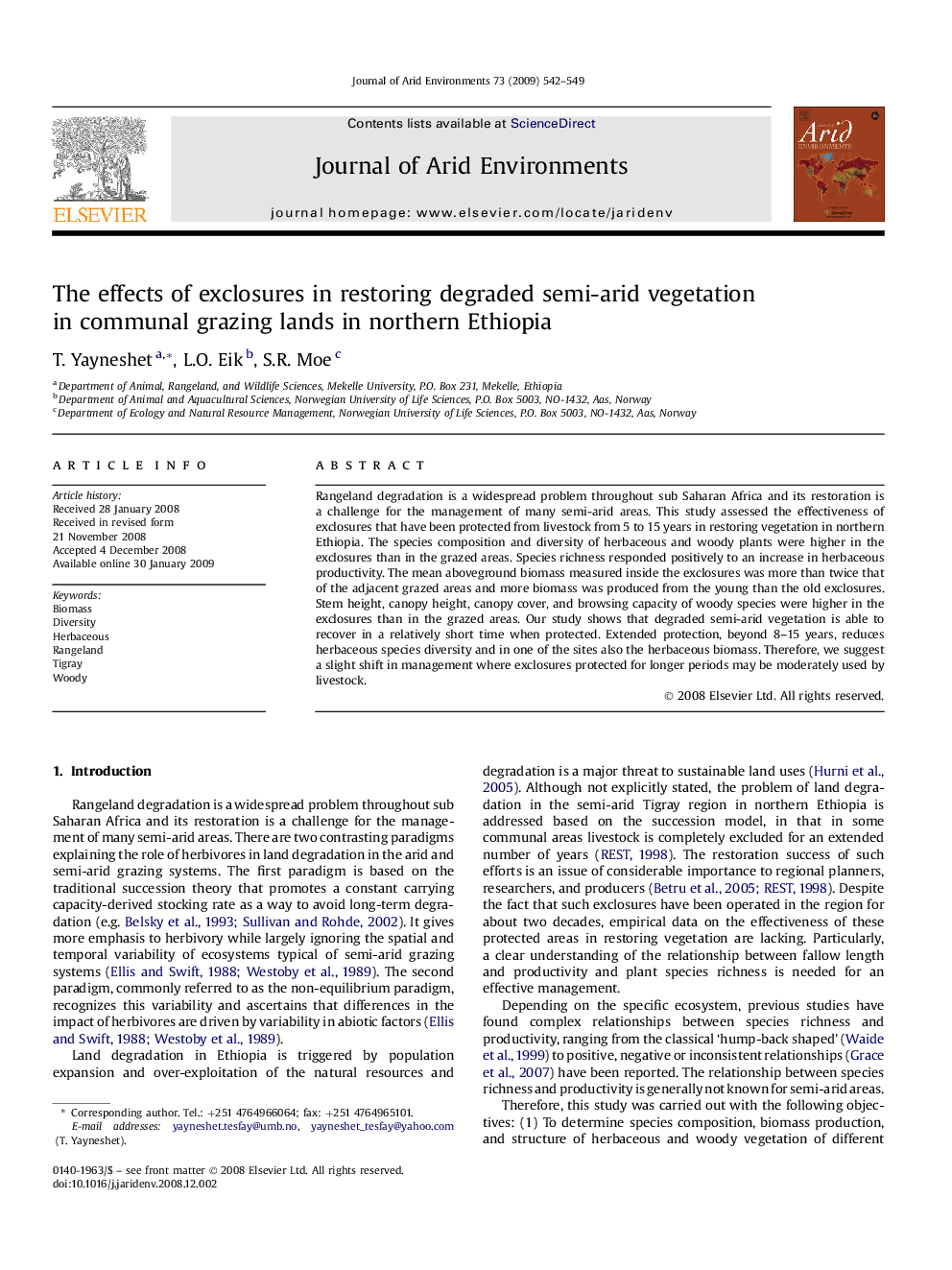| Article ID | Journal | Published Year | Pages | File Type |
|---|---|---|---|---|
| 4393963 | Journal of Arid Environments | 2009 | 8 Pages |
Rangeland degradation is a widespread problem throughout sub Saharan Africa and its restoration is a challenge for the management of many semi-arid areas. This study assessed the effectiveness of exclosures that have been protected from livestock from 5 to 15 years in restoring vegetation in northern Ethiopia. The species composition and diversity of herbaceous and woody plants were higher in the exclosures than in the grazed areas. Species richness responded positively to an increase in herbaceous productivity. The mean aboveground biomass measured inside the exclosures was more than twice that of the adjacent grazed areas and more biomass was produced from the young than the old exclosures. Stem height, canopy height, canopy cover, and browsing capacity of woody species were higher in the exclosures than in the grazed areas. Our study shows that degraded semi-arid vegetation is able to recover in a relatively short time when protected. Extended protection, beyond 8–15 years, reduces herbaceous species diversity and in one of the sites also the herbaceous biomass. Therefore, we suggest a slight shift in management where exclosures protected for longer periods may be moderately used by livestock.
